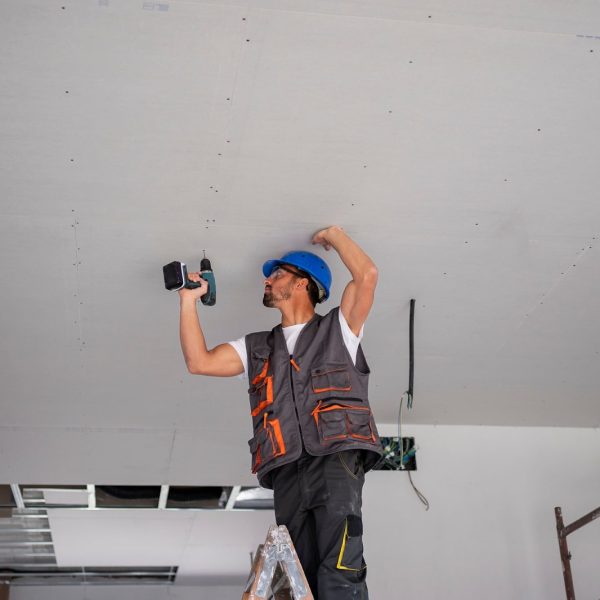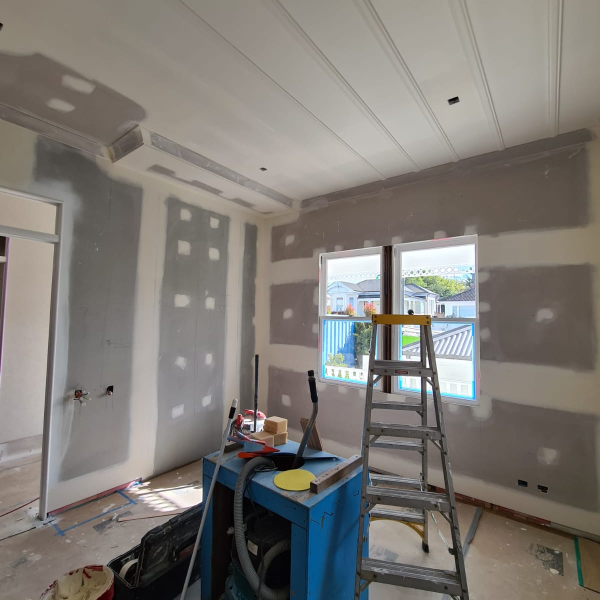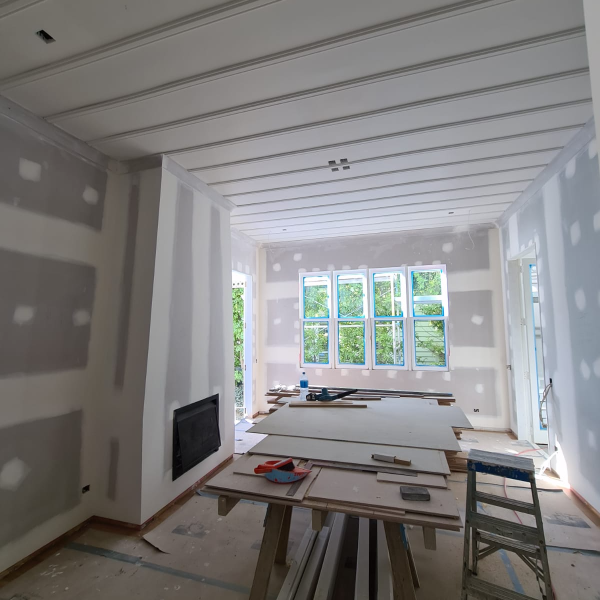GIB® Fixing vs. GIB® Stopping: What’s the Difference and Why It Matters?
GIB® Fixing vs. GIB® Stopping
Request A free Quote Today!
What Are GIB® Boards?
GIB® boards are a leading brand of plasterboard in New Zealand and are popular choices due to their long-lasting nature, versatility, fire resistance and availability. GIB® boards may also be referred to as ‘plasterboard,’ ‘drywall’ and ‘wallboard.’
These boards have a very straightforward but effective design. They’re made of a gypsum core sandwiched between paper. Gypsum, paper and the other materials used to create GIB® plasterboards are recyclable, so GIB® boards are also an eco-friendly choice.
What Is GIB® Fixing? Why Is It Important?
GIB® fixing is the stage where the GIB® boards are installed to the wall or ceiling framing. The GIB® boards are carefully secured to the framing to prevent damage to your home’s structure or to the plasterboards themselves.
The basic steps of the GIB® fixing process are:
- Measuring Your Framing And Planning Out The Installation. Your site will be carefully analysed to understand how many boards are needed, how they’ll be cut and how they’ll be installed. Professionals understand how to install boards in a way that they adequately cover the surface, but they’re not too packed together, and they’re not too spaced apart. Plasterboard can expand and contract due to changes in temperature and humidity, so it must be fixed in a way that accommodates these changes. If not, the boards could crack.
- Cutting The GIB® Boards To Size. Once everything is planned out, the boards will be cut exactly to size.
- Attaching The GIB® Boards To Framing. GIB® plasterboards are attached using screws or nails. Precision and care are important during this step to ensure the boards are correctly installed to the framing and that the boards aren’t damaged in the process.
- Checking For Quality. Once GIB® fixing is complete, your fixers will analyse the final results to look for mistakes, forgotten details or improper alignment.
GIB® fixing is the first step in preparing your interior surfaces for painting, decoration or the next part of your home build or renovation project. It’s such an important process because fixing ensures your plasterboards are appropriately secured to your framing, setting the stage for robust walls and ceilings.
Poor fixing can lead to uneven surfaces, cracks and movement over time and surfaces that are doomed from the start.
What Is GIB® Stopping? Why Is It Important?
GIB® stopping occurs after GIB® fixing, and is the process of using a joint compound over the fixed plasterboards to create a smooth finish. After GIB® boards are fixed, there will still be visible joints and screws.
The basic steps of the GIB® stopping process are:
- Preparing The Joint Compound. GIB® stoppers must select an appropriate joint compound and make sure it’s prepared before applying.
- Applying The Joint Compound To Gaps, Screws And More. The smooth joint compound is laid over any features that need to be covered. Joint tape is then embedded over the joint compound.
- Feathering The Compound. Joint compound is applied to the stopped sections and ‘feathered’ to taper down the compound so that it seamlessly blends into the wall.
- Letting The Stopped Section Dry. The joint compound must be allowed to dry before moving on. Trying to work with still-wet compound can compromise the integrity of the stopped sections.
- Sanding and Smoothing. Once dry, the stopped sections will be sanded and smoothed so they blend into the rest of the plasterboard.
- Repeat As Necessary. Multiple coats of joint compound may be needed.
GIB® stopping is a crucial step in the process because it improves the structural integrity of the walls. The joint compound also hides gaps, screws and other imperfections that most people find unsightly. GIB® stopping ensures the walls look smooth and flawless, preparing your space for your future interior design.
GIB® stopping requires experienced individuals because poor stopping work can leave ridges and other flaws. Professional fixers and stoppers understand exactly where and how to apply joint compound, whereas an amateur might use too much compound, use too little compound, etc.
Ensuring Your GIB® Fixing And Stopping Are Perfect With Above Board Interiors
Both GIB® stages are absolutely essential, so it’s vital that you find the right professionals for your home project. We at Above Board Interiors handle both fixing and stopping, and we’ll be happy to help. We also offer plastering and painting services for clients who want to improve their home interiors.
Ready to start? Do you have any questions for us? Call 021446716 or send us a message online.
Above Board Interiors: We handle every step with care.




